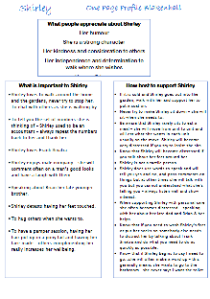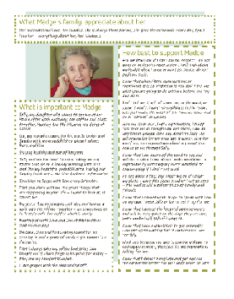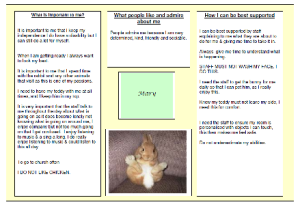Written by Guest Blogger, Nathan Archer, Development Manager at Montessori Nursery, Read Nathan’s one-page profile.
Lincolnshire Montessori offers nursery and Primary education from two sites in Lincolnshire. We have children from six months through to 11 years old on roll and a team of sixty professionals on site.
We first discovered one-page profiles via a weekly early years sector Tweet Up #EYtalking on Tuesdays 8.00pm GMT.
The weekly theme was on Learning Journeys, which for those who are unfamiliar, are an approach to formative assessment in the early years, which is largely qualitative and respectful. Essentially, observations of individual or groups of children are written and often comprise photographic evidence, children’s artwork or a record of their ‘voice’ in a range of ways. Parents/carers, family members and other professionals are also encouraged to contribute. Many early years settings collect these stories in booklet, file or scrap book format to form the child’s learning journey through the Early Years Foundation Stage.
During this discussion, a colleague pointed us to Helen Sanderson Associates website and the youtube video on one-page profiles.
Cue Light bulb moment!
What struck us was the way in which such personal information would enable us to really know a child and their family, developing a much deeper understanding of a child’s personality, disposition, routines and welfare needs in an holistic way.
One of the four main themes of the Early Years Foundation Stage is ‘A Unique Child’ and we felt that one-page profiles were a very tangible way of reflecting our understanding of the needs of individual children.
We purchased a postcard from the Helen Sanderson website which gave an example of a profile for a little girl called Flo. This proved a helpful basis for developing our own profiles. We took the headings from the card as the basis;
What do we love about….
What is important to…..
How to look after….
Our Head of Early Years Jo Robinson completed a sample one-page profile based on her youngest son which served as a prompt for both parents and professionals about the kind of information which might be shared to inform the child’s care.
We have coupled this one-page profile with a starting point sheet (an OfSTED requirement) which enables the team to capture a child’s starting points in terms of their development in the Early Years Foundation Stage (EYFS). On the reverse of the profile, Practitioners make brief notes under the seven areas of learning and the Characteristics of Effective Learning; Active Learning, Playing and exploring and Creativity and Critical thinking.
By combining these two elements we have created a real snapshot of a child who joins us, both in terms of their uniqueness and how best to meet their needs, with a summary of their learning and development as a base for future progress.
Feedback from parents/carers has been very positive and we feel that children are even better cared for with their individual needs more closely met.
There has also been real enthusiasm from the team for the new one-page profiles, who rather than seeing it as yet another form, feel they are capturing helpful information to really personalise the care and education we offer.





